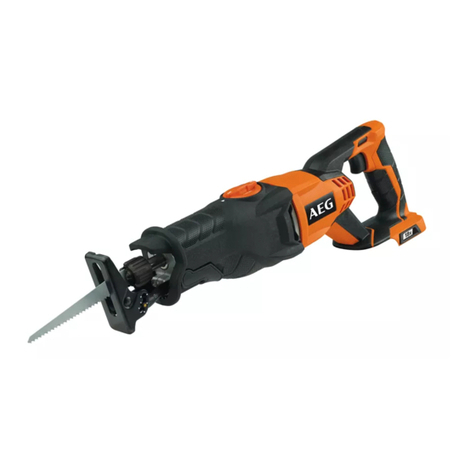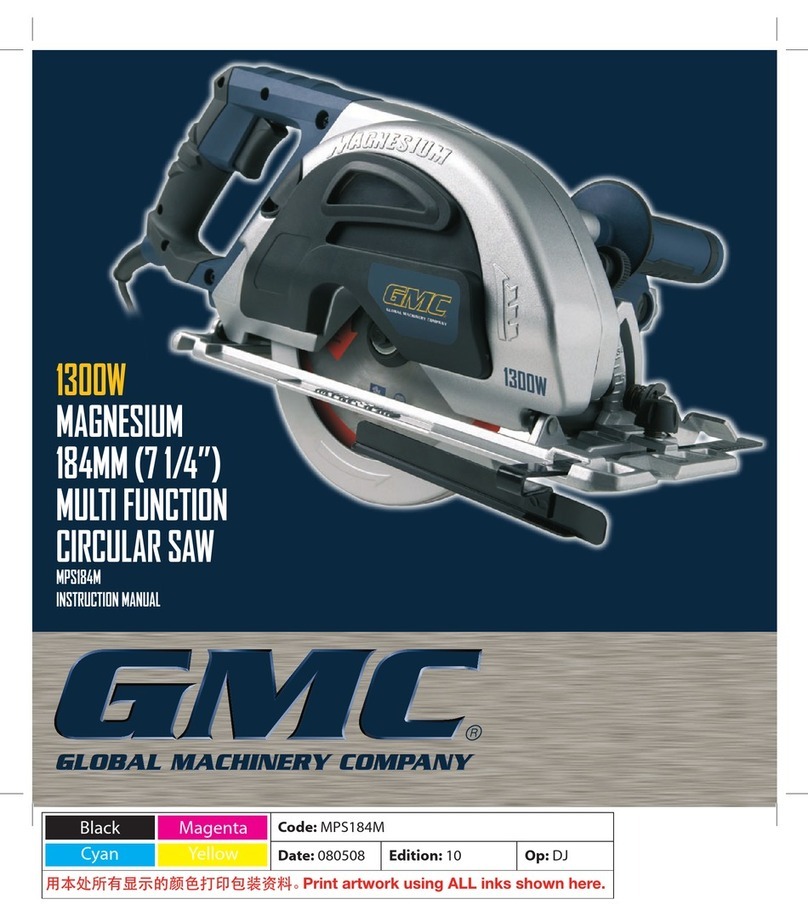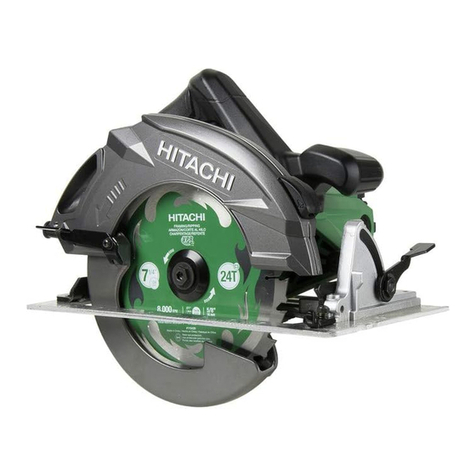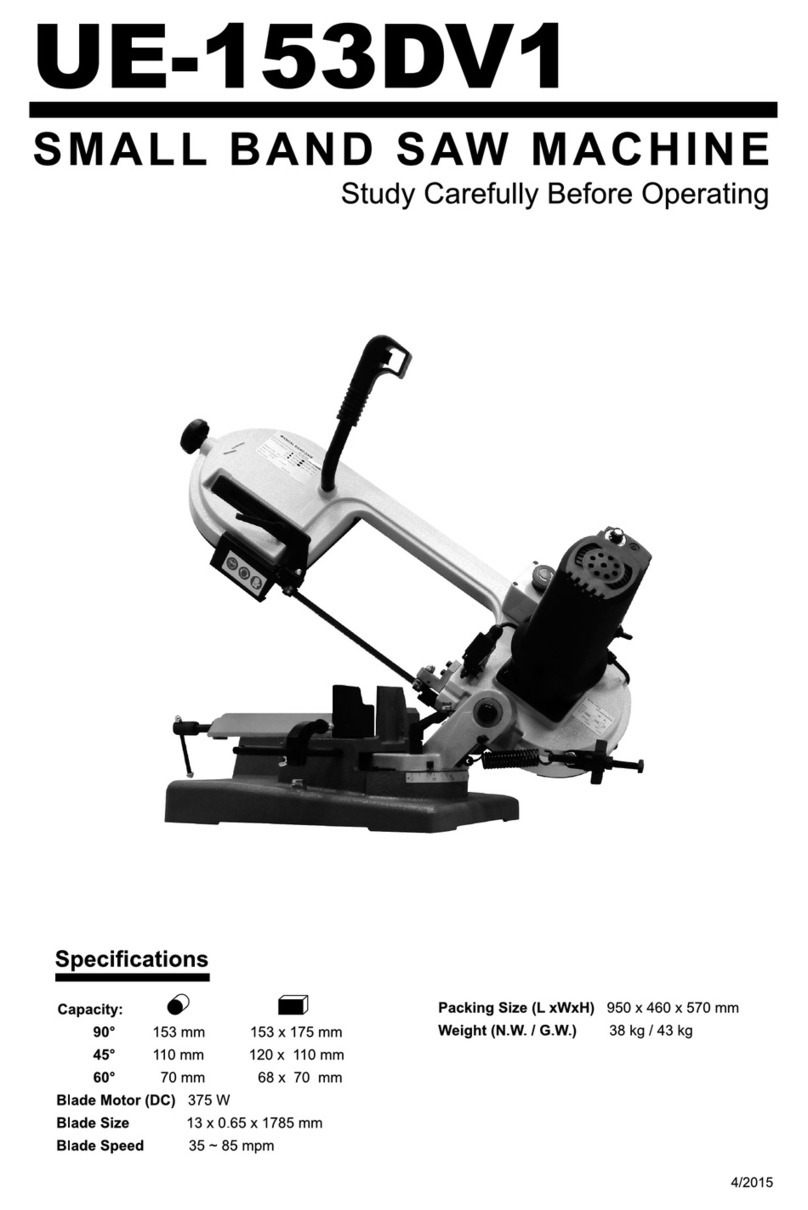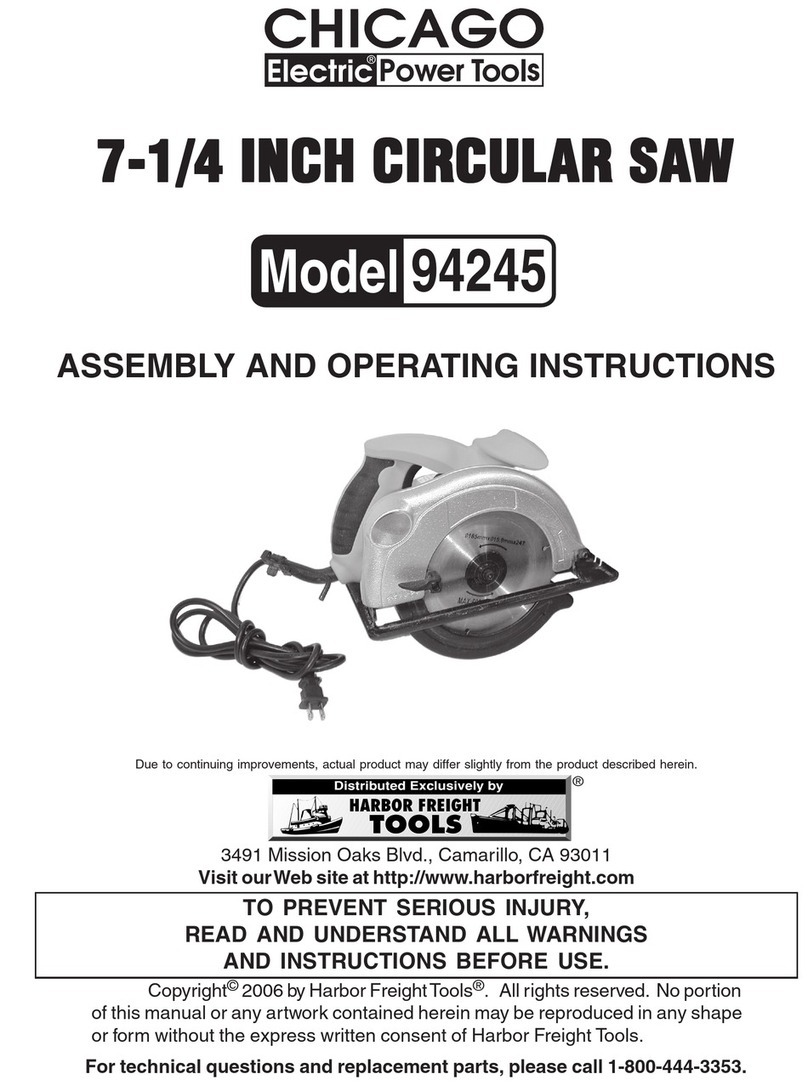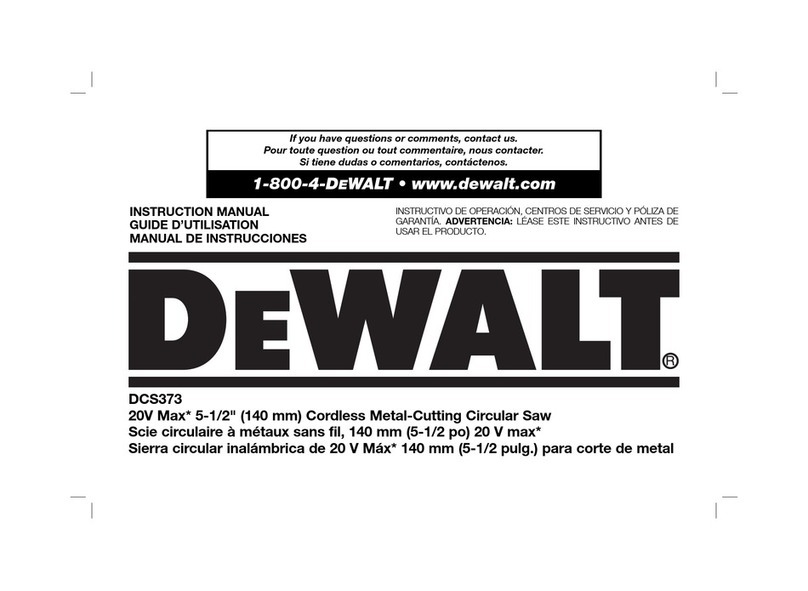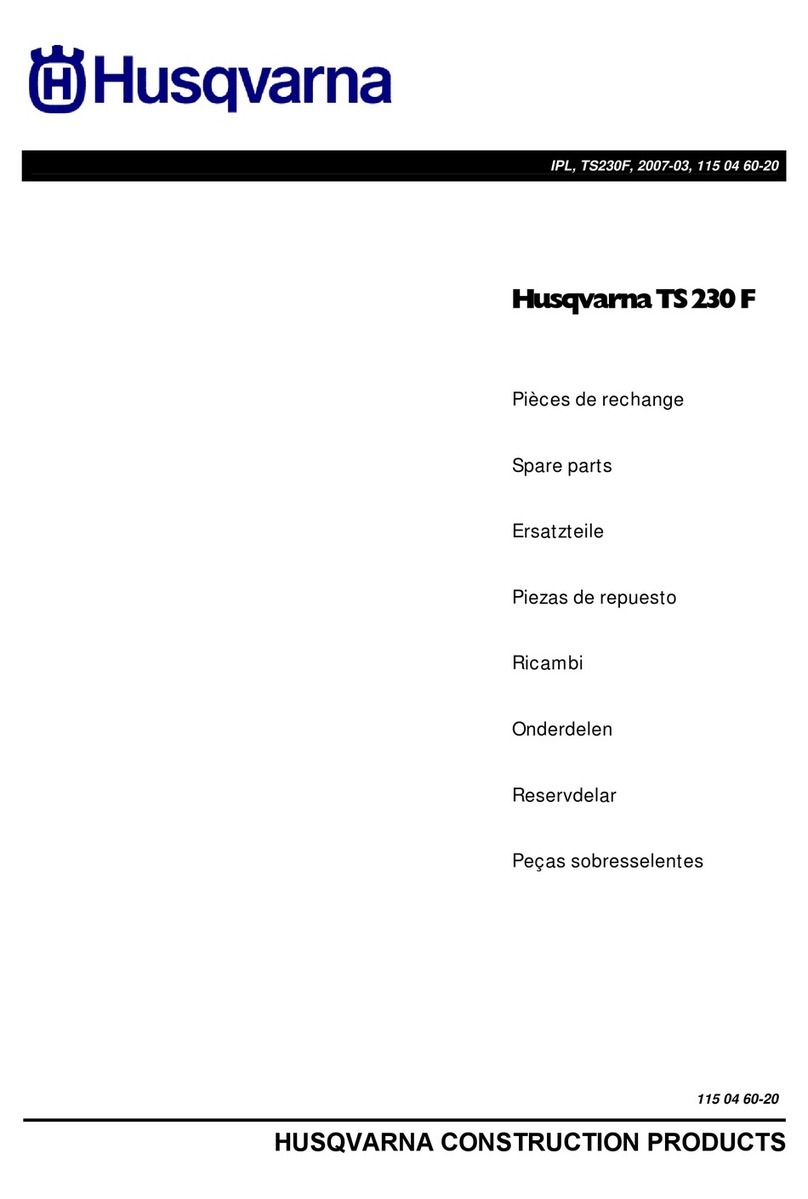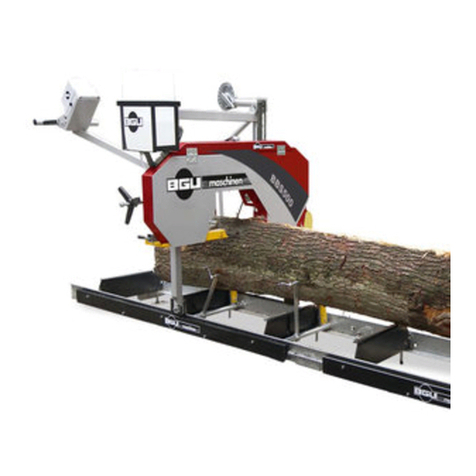Eurekazone Ripsizer25 Installation instructions

EZ RipSizer 25”
SKU: ripsizer25
Assembly Instructions
User's Manual
opyright © 2011 Eurekazone Inc.
1

Introduction
The EZ RipSizer is the perfect tool for the job site and the workshop. It allows for
ripping material of unlimited length to a width up to 25”. In keeping with the
“Deadwood oncept,” that is the basis for the EZ Smart System, the material is placed
on a sturdy support structure (ex: the EZ Smart Table Kit or sawhorses) and the cut is
made using any saw along with the RipSizer. The flexibility of the RipSizer eliminates
the need for long track saw rails and a table saw, whether in the shop or on the job site,
for the sizing of cumbersome sheet goods.
When not in use the EZ RipSizer is stored easily, either left assembled or disassembled
and placed in a case or box, and is easily transported.
Note: The EZ RipSizer requires the use of a portable circular saw and is compatible
with any style of saw. Be sure to follow all safety precautions and to not perform any
modifications that disrupt any safety mechanisms on the saw. It is advised to wear
hearing and eye protection during all cutting procedures.
For updates to the EZ RipSizer and all other Eurekazone products be sure to visit the
Eurekazone website (www.eurekazone.com) or the Track Saw Forum
(www.tracksawforum.com).
2

Parts and Inventory
PART # PART NAME QTY
1 28” Support Arms 2
2 42” Fence 1
3 36” Smart Rail w/ Edge Anti- hip (EA ) Inserts 1
4 Rail Support Brackets 2
5 Fence Support Brackets 2
6 Stabilizers (one disassembled to show components) 2
7 48” L-R Self-Adhesive Measuring Tape 1
8 48” R-L Self-Adhesive Measuring Tape 1
- Allen Wrench (Not Pictured) 1
- Assembly Manual (Not Pictured) 1
- Smart Base (Not Pictured) 1
- Anti- hip (A -1 and A -2) Inserts (Not Pictured) 2 each
3

Assembly
Note: Trim EA (Edge Ant- hip insert) prior to assembly to ensure proper zero-
clearance functioning and to avoid causing damage to the EA . Instructions for
trimming the EA can be found in the back of this manual under Appendix 2.
STEP 1: Attaching Rail Support Bracket to the Smart Rail
Turn Smart Rail upside down. Slide Rail Support Bracket into end of rail until it
stops. Tighten screws with Allen wrench. NOTE: Over-tightening of the screws may
cause dimpling of the top surface of the guide rail. However, dimpling of the surface
of the Smart ail will not affect the function of the ip Sizer as the saw does not
require the full length of the Smart ail. Repeat for second Rail Support Bracket.
STEP 2: Installing Fence Support Brackets on Support Arms
Place Fence Support Bracket in outer track of Support Arm. Align edge of block on
the Fence Support Bracket with the end of the Support Arm. Tighten screw on the
side of the Fence Support Bracket. Repeat for second Support Arm assembly.
4

STEP 3: Installing Support Arms on Rail Support Brackets
Slide Support Arms onto Rail Support Bracket at one end of the Smart Rail. Turn
adjustment knobs on Rail Support Bracket but do not fully tighten. Repeat for other
end of the Smart Rail.
STEP 4: Installing Fence
Slide one end of the Fence into the Fence Support Bracket. Then slide other end of
the Fence into the other Fence Support Bracket. Stabilizers do not need to be
installed at this time but will be installed during the calibration steps. The top and
side screws on the Fence Support Bracket do not have to be fully tightened at this
point in the assembly.
STEP : Attaching Measuring Tapes to Support Arms
Line up the end of one Support Arm with the 25” mark on the measuring tape selected
for that particular Support Arm. The measuring tapes can be temporarily attached
using tape, or permanently using the adhesive on the measuring tape. Temporary
attachment will allow for any adjustments in the position of the tapes to be made
upon completion of the assembly and calibration.
5

Note: The direction of the tape (L-R or R-L) is not important. Which
tape is applied to a particular Support Arm is up to individual preference
for personal ease of reading. The tape can be trimmed once set up is
complete.
The next part of the set up is to square the Fence to the Support Arms and to
alibrate the RipSizer for use.
6

alibration & Use
The Rip Sizer can be calibrated a few ways depending on user preference for
location of “keeper” piece, material being cut, and saw being used. The
following instructions are for right blade saws. These instructions are not all
inclusive and calibration procedures can be modified. Important to note is that
the method of calibration used will affect the cutting range for the RipSizer.
Note: For the following calibration instructions the “near side” of the rail is the
side toward 0” on the tape measure and the “far side” of the rail is the side
toward 25” on the tape measure.
VERSION 1: Fence under the Rail (Cutting range: 6-2 ”)
1. Set edge of Rail Support Bracket opposite the Fence at the 0” mark. A small
machinists square or a wood block can help make an accurate alignment. Tighten
knobs.
2. Place saw at one end of the far side of the Smart Rail.
3. Loosen the side screws on the Fence Support Brackets. Slide the Fence under the
Smart Rail and line up with the inside edge of the saw blade. Tighten the side
screw on the Fence Support Bracket.
4. Move the saw to the other end of the Smart Rail and repeat Step 3. It may be
helpful to move the saw back to other end to verify that the Fence and saw blade
are parallel. Make any adjustments as needed.
5. Slide out one end of the Fence and insert the two Stabilizers to 12” from each
end.
With this calibration set-up, the RipSizer can be used to perform a rip width of 6” to
25” (rips narrower than 6” may cause instability) with the keeper piece under the
Smart Rail. The cut is made from right to left. The set up for cuts involves lining up
the far edge of the Rail Support Bracket to the desired dimension.
7

VERSION 2: Fence on Outside of Blade (Cutting range: 0-19 ½”)
1. Align near edge of Rail Support Bracket at the 0” mark. Tighten knobs.
2. Move Stabilizers (if already installed in Fence) to the center of the Fence. Once
calibration is complete the Stabilizers will be moved back to 12” from each end.
3. Place saw at one end of the near side of the Smart Rail.
4. Loosen the side screws on the Fence Support Brackets. Slide the Fence to line it
up with the outside edge of the saw blade. Tighten the side screw on the Fence
Support Bracket.
5. Move the saw to the other end of the Smart Rail and repeat Step 4. It may be
helpful to move the saw back to other end to verify that the Fence and saw blade
are parallel. Make any adjustments as needed.
With this calibration set-up, the RipSizer can be used to perform a rip cut up to
19 ½” wide (Note: can do up to 22 ¼” with the end of the Support Arm at the mid-
point of the ail Support Bracket). The cut is made left to right and the keeper piece
is to the outside of the blade.
MAKING THE CUT
Set the RipSizer on the material with 2/3 of the RipSizer supported by the material.
The stabilizer locations, 12” from each end of fence, can help locate the RipSizer on
the material. The saw is started off the material. Turn saw on and advance the saw
into the material, applying steady support to the Fence, until the saw is at the mid-
point of the RipSizer. There is no need to stop the saw at the mid-point, but with a
steady motion start advancing the RipSizer while keeping the saw in the same place
relative to the RipSizer. As you approach the end of the material, stop sliding the
RipSizer, to keep 2/3 of it supported by the material, and advance the saw through
the rest of the cut to the end of the RipSizer.
8

Appendix 1: Installing the Smart Base
Note: Keep power cord unplugged throughout this process.
STEP 1: Installing the Smart Base
1. Before the test fit, the saw blade must be squared to the saw base.
2. Place the Smart Base on the inside track and the saw on the Smart Base for a test fit. The
goal is to make sure the blade will be able to trim 1/64” to 3/8” off the EA (see Appendix
2 for instructions on trimming the EA ). lamps can be used to make sure that the saw
base and Smart Base are making good contact.
3. Alignment screws are used to square the saw base to the Smart Base thereby aligning the
blade to the inside channel (+/- 1/128”). After installation, the screws may be removed.
STEP 2: Attaching the Smart Base
Note: The Smart Base may be drilled at any location as long as the screws used to attach the
Smart Base to the saw base do not get in the way of any part of the saw and its proper
functioning. The numbers below correspond to the numbers in the image.
1. These are pre-located positions for drilling but other
locations may be used.
2. Holes can be drilled at the middle of the channels
but should be countersunk for the head of the screw.
3. All circular saws have adjustment screws to square
the blade to the base from the bottom. If possible, it
is much easier to remove the alignment screw and
re-insert it from the top, otherwise, an access hole
will have to be drilled into the Smart Base.
9

Appendix 2: Trimming the Inserts
TRIMMING THE EDGES (EACs)
1. Tape the edges to a piece of scrap wood and lower the blade 1/16” below the wood.
2. Lock the blade using the depth control knob, pulg in the cord, and make your first cut. ut
only has to be 1/16” deep. Save the piece of scrap wood for trimming other edges.
TRIMMING THE AC-2
1. Raise the blade above the wood.
2. Slide the insert in place until it clicks in the base.
3. Place the saw on the inside track
4. lamp the track to a piece of scrap wood. Be aware of what is below the wood as this
trimming process involves cutting through the wood
5. Plug in the saw. With the blade well above the wood, start the saw and slowly plunge the
blade to cut the A -2 and the wood together. Plunge to full depth of blade.
10

TRIMMING THE AC-1
Note: The A -1 insert is not used with the RipSizer. The A -1 insert is used for 1) freehand
cuts, 2) to obtain more depth of cut using the track as an edge guide, and 3) to obtain chip-free
cuts using any straight edge.
1. Raise the saw blade above the wood.
2. Slide the insert in place until it clicks in the base.
3. Place saw on top of a piece of scrap wood.
4. Plug in the saw. Turn the saw on and slowly plunge
into the A -1 and the wood together.
- END-
11
Table of contents
Other Eurekazone Saw manuals
Popular Saw manuals by other brands

Hafco Metalmaster
Hafco Metalmaster ALU-350A Operation manual
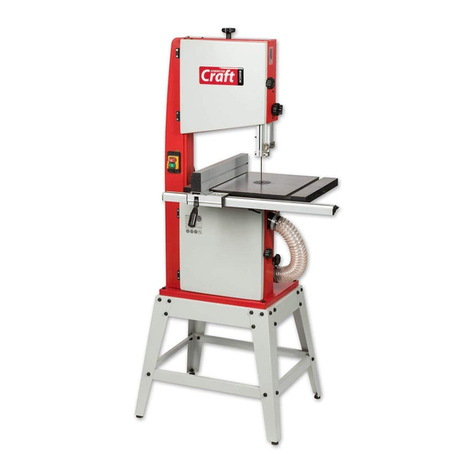
Axminster
Axminster AC1950B Original instructions

Metabo
Metabo KGS 216 M Original instructions

Kval
Kval 979-2 Operation and service manual
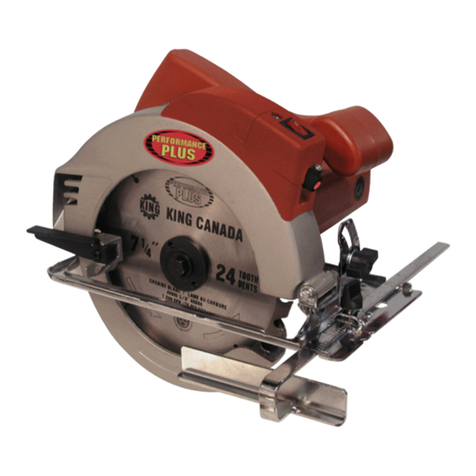
King Canada
King Canada 8307L Service manual

Valex
Valex SC161 Translation of the original operating instructions

